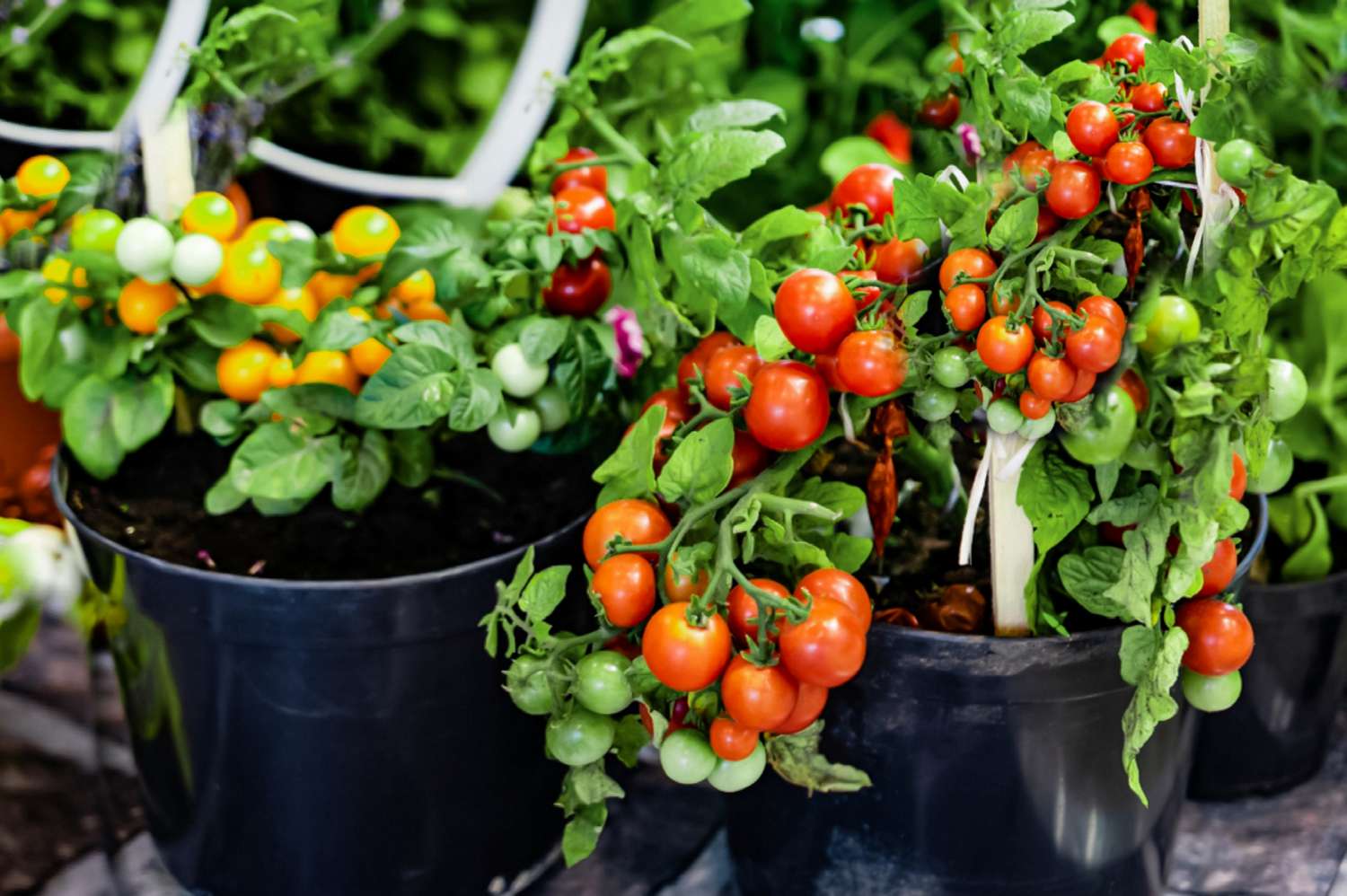Growing tomatoes in containers is an excellent way to enjoy fresh, homegrown tomatoes even if you have limited space. Whether you’re a beginner or an experienced gardener, container gardening offers numerous advantages.
In this guide, we will explore the key steps and considerations for successfully growing tomatoes in containers, supplemented with practical examples to help you achieve a bountiful harvest.
1.Select the Right Container:
To grow tomatoes in containers, you need to choose the right pot or container. Opt for large containers with a minimum volume of 5 gallons. This ensures there’s enough space for the tomato’s roots to grow. For example, a 10-gallon fabric pot or a whiskey barrel planter works well.
2.Choose the Appropriate Tomato Varieties:
Not all tomato varieties are suited for container gardening. Determinate or bush-type varieties, such as Patio Princess or Tiny Tim, are ideal for limited spaces. These tomatoes are more compact and produce a concentrated yield.
Read Also: Estimating Waste-water Flow Rates from Water Supply Data
3.Quality Potting Mix:
Use a high-quality potting mix with good drainage. Mixes specifically designed for vegetables or tomatoes are available and should be your choice. For instance, a mix composed of 40% peat moss, 40% compost, and 20% perlite provides a balanced medium for tomato growth.
4.Position and Sunlight:
Place your container in a location that receives at least 6-8 hours of sunlight per day. Tomatoes require ample sunlight for photosynthesis. South or southwest-facing balconies or patios are often good spots.
5.Proper Watering:
Consistent watering is vital. Keep the soil consistently moist, but not waterlogged. A self-watering container can be a convenient choice to maintain adequate moisture levels. Using a drip tray underneath your container helps prevent waterlogging.
6.Staking and Support:
As your tomatoes grow, they may require support. Stake your plants or use tomato cages to prevent them from falling over due to the weight of the fruit.
7.Fertilization:
Use a balanced, slow-release fertilizer or organic options. Tomato plants are heavy feeders, so regular feeding is essential for healthy growth and fruit production.
8.Pruning:
Pruning helps manage the plant’s size and encourages air circulation. Pinch off the lower leaves and side shoots (suckers) regularly to focus energy on fruit production.
Example: Once you notice side shoots forming at the leaf nodes, pinch them off using your fingers or pruning shears.
9.Pest and Disease Management:
Keep an eye out for common tomato pests like aphids, whiteflies, or hornworms. Additionally, be vigilant about diseases such as blight or powdery mildew. Consider using organic pest control methods to minimize damage.
10.Harvesting:
Harvest your tomatoes when they are fully ripe. Different varieties will have varying maturity times. Ripe tomatoes will have vibrant color and yield slightly to gentle pressure.
In conclusion, growing tomatoes in containers is a rewarding endeavor, and when done correctly, it can yield a flavorful and bountiful crop.
By following these steps and considering the examples provided, you can create a thriving container garden that provides you with homegrown tomatoes throughout the growing season. Enjoy the taste of freshly harvested tomatoes, even in limited spaces.
Read Also: CBN Will Introduce New FX Laws and Guidelines to Tackle Naira Depreciation — Cardoso
